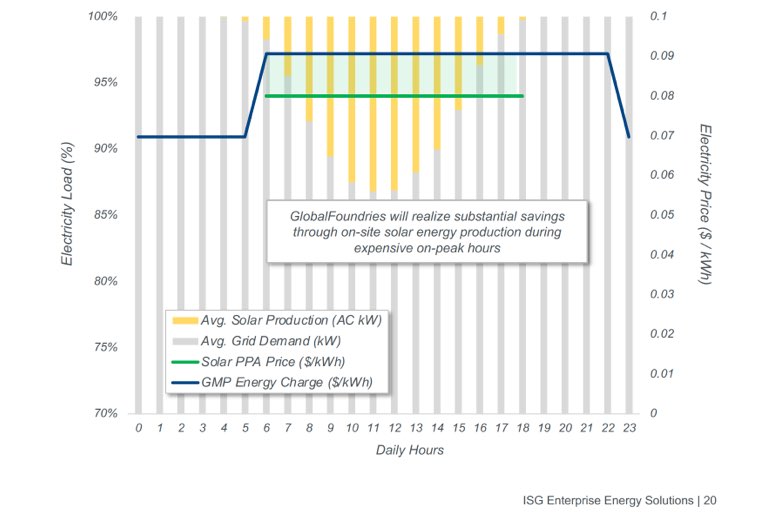Logistics & Transportation Market Update
2020 Recap & 2021 Outlook
This article from Insight Sourcing Group’s Logistics Center of Excellence focuses on four transportation subcategories, the market impact for each over the past 12 months, what our team forecasts will happen this year, and shares three tips for shippers to align their strategy with in 2021.

Introduction
2020 was a year like no other in transportation and was characterized by massive disruptions, volatile swings in pricing, and massive capacity shortages.
Early in the year markets that started soft hit rock bottom as the global pandemic drove rapid economic declines. However, beginning at the end of Q2 as industries started to re-open a combination of capacity shortages and demand spikes drove rates northward rapidly. Service suffered greatly in some modes like small parcel and ocean freight. Nearly every category ended the year with double or triple digit increases that demolished transportation budgets and sent teams scrambling to secure capacity.
Despite these increases, Insight Sourcing Group partnered closely with our clients across nearly every mode to drive savings through a variety of levers beyond price to help navigate these challenging times.
Truckload
Truckload Strategies that Worked in 2020:
Leveraging benchmarks to launch more targeted sourcing efforts helped focus just on top opportunity lanes while protecting competitive prices. Fuel programs drove hard savings that stuck—even in escalated markets—and brought up to 30%+ of total savings. Best in class shippers have migrated to 7 mpg / 7 cent escalator programs and zero-base fuel programs that are driving significant savings. Mode optimization brought as much as 30-50% of final contracted savings by analyzing truckload, intermodal, and LTL optimization. Doubling down on supplier relationship management efforts also helped prevent unnecessary increases through committed partnerships.
Outlook for 2021:
Rates remain high at the beginning of 2021 due to operational inefficiencies and driver shortages, which are expected to persist until the vaccine returns capacities to normal. Fuel prices are 34% lower YoY and continue to mask linehaul increases. Demand is still significantly higher than capacity, leaving carriers empowered to reject or rebid loads / lanes. Kiosks and emailed BOLs are being utilized as paperless trucking becomes more commonplace. Dry van spot rates have increased 26% YoY, while Reefer and Flatbed are up 16% and 14%, respectively.
Contract rates are expected to rise in 2021 with projections as high as 8-10% increases YoY. The national average for dry van outbound tender rejection rates has fallen to 25%, indicating we may be seeing the peak of spot market rates; the importance of back-up carriers and supplier relationship management strategies remain. To reduce costs, shippers should look to optimize their freight by looking to consolidate trucks or mode shifting to LTL or Intermodal. Recent Insight Sourcing Group projects have still shown savings despite the market constraints, but quarterly or mini-bids may be helpful to stay in control of pricing and service as rates remain volatile for the next three to six months.
Less-than-Truckload (LTL)
LTL Strategies that Worked in 2020:
Brokers showed big savings and, at times, surpassed asset pricing with strong underlying carrier mixes by leveraging their larger buying power. Regional niche brokers especially flexed pricing power and efficiency to beat national competitors in niche markets. Optimization across incumbents or down to the shipment level brought strong opportunities as well, with shipment optimization driving 15% incremental savings or more versus state-to-state routing. Incumbents gave strong concessions through competitive market events to maintain business. Recent projects have shown significant savings through a mix of direct carrier and third-party logistics (3PL) models bringing an average of 8-12% savings.
Outlook for 2021:
ISM Production Manufacturing Index (ISM PMI) closed out the year up 20%; however, the U.S. producer price index for LTL trucking showed slight decline of 3.5% indicating carriers gave on pricing throughout the year. Old Dominion and XPO closed out the year with operation ratios (OR) of 74.5 and 79 respectively, showing healthy profit margins of 20%+. The majority of other carriers have room to grow with ORs close to 90. LTL demand is being heavily driven by three main factors: increase in US imports from overseas, massive e-commerce boom, and traditional industrial categories like automotive parts. UPS announced the sale of its LTL business to Canadian carrier TFI International for $800mm and will be called TForce Freight. Existing customers will be serviced for five years under the agreement.
Current projections are for LTL prices to rise in the mid-to-high single digit range in 2021 as carrier GRIs take hold and as higher truckload prices continue to take pressure off LTL rates. Insight Sourcing Group advises shippers to conduct LTL sourcing events in the first half of 2021 to secure rates and service before markets continue to rise. Recent LTL projects we have executed have shown significant savings through a mix of direct carrier and 3PL models bringing an average of 15% savings. Shipment optimization and carrier mix allocation continued to be big levers in 2020. 2021 will be a critical year for monitoring carrier performance and RFP compliance to reduce savings erosion and maximize service.
Small Parcel
Small Parcel Strategies that Worked in 2020:
Carriers often took longer than normal to respond to RFPs, but clients still saw savings. Parcel carriers showed a preference for business-to-business and off-peak shippers. Larger clients shifted focus to adding regional carriers to the mix to supplement service issues and avoid surcharges. Insight Sourcing Group’s small parcel clients saved an average of 10% across $400mm of spend.
Outlook for 2021:
FedEx and UPS had historic shipment volume go through their networks and implemented capacity limits on large residential shippers during peak. Peak surcharges have been extended into 2021 with no end in sight. Both carriers applied 4.9% average increases for 2021, but the biggest rate increases were to the lightest packages for most service levels. Longer zone air services and shorter ground services are taking larger-than-average increases. FedEx is following UPS’s lead in penalizing late payments by instituting a 6% late payment fee. Nearly all surcharges are increasing by more than 4.9%.
The small parcel market remains elevated due to returns from peak season and continued strong ecommerce sales. Regional carriers should be included in sourcing strategies to reduce risk and improve service. Significant opportunity to reduce cost through optimization still exists: service optimization, network optimization, mode shifting, unnecessary accessorial charges, and other strategic levers.
Ocean Freight
Ocean Freight Strategies that Worked in 2020:
Leveraging Non-Vessel Operating Common Carriers (NVOCCs) provided opportunities to drive savings while finding capacity options. Reducing free times and accelerating container turns encouraged carriers to partner as they scrambled to return boxes to Asia. Breaking door-to-door moves into their individual legs helped drive visibility into pricing and ability to reduce costs on segments with less volatility. Clients shifted volumes to alternate ports to improve transit times as evaluate savings opportunities. Bunker adjustment factor (BAF) programs helped manage costs as very-low sulfur fuel oil (VLSFO) prices dropped quickly early in the year.
Outlook for 2021:
U.S. import volumes continue to remain elevated, contributing to the Port of Long Beach’s busiest quarter ever, handling 2.4M TEU (23% YoY increase). These elevated demand levels in the U.S. and globally continue to max out global container capacity and cause a shortage of containers in many East Asian ports. Maxed out vessel capacity has increased cargo roll levels in recent months, reaching 37% in Shanghai and 55% in Port Klang, Malaysia. Containers that make it on a ship have experienced delays in transit times, with port congestion issues reducing vessel on-time performance to a record low of 52% globally and 32% for Asia-USWC.
Spot rates remain elevated, with Freightos Baltic Index Global Container Freight Index rates are up 154% YoY, driven by continued elevated rates in both Asia-USWC (171%) and Asia-USEC (102%) as well as more recent spikes in Asia-North Europe (268%) and Asia-Mediterranean (203%) to record highs. Fuel prices are increasing again after a significant price drop at the beginning of 2020, with the price of VLSFO increasing 43% since the beginning of November.
Elevated container volumes are continuing through Q1 2021 and likely into Q2. In a reversal from typical trends, carriers maintained full capacity during Chinese New Year to continue handling the large volumes. Feedback from both carriers and shippers are that beneficial cargo owner (BCOs) rates on major lanes (Transpacific East Bound, as an example) are locking in at 30-100% increases minimum commitments covering as much as 80-90% of expected volumes.
Conclusion & Key Takeaways
2021 is expected to be another raucous year for transportation. Based on current industry reports, however, some modes such as truckload and ocean have hit their peaks and spot rates will start to trend down over the year. Contract rates often lag behind and may take three to six months to catch up.
Therefore, we recommend that shippers align their strategy with three key tips in mind:
- When applicable, be more targeted and surgical with what business you take to market. A broad based RFP covering 100% of your spend may not be right in every category if you have competitive rates and acceptable service in some areas.
- Don’t lose sight of the value of securing capacity and maximizing service. Ocean markets, for example, are almost at 100% utilization and failure to pay for service this year may drive big problems in the remainder of your supply chain.
- Pull the harder levers where big savings opportunities lie. Projects like shipment consolidation are no easy task to drive improvements on, but can show significantly more savings than you would ever get in a linehaul negotiation. Challenge customer order patterns by offering incentives that help you drive cost down and share savings appropriately for example.
This will continue to be a challenging year as the pandemic continues on and capacity shortages continue to plague major modes. We may not see relief in most categories until later in the year when rates may finally start to decline; however, it is possible that without significant changes in demand we will not reach the prices we saw in early 2020.
Insight Sourcing Group is partnering with our clients every day to tackle these logistics and transportation markets. We are helping them build the roadmap of how to drive savings, where to focus, and how to make sure their strategies come to fruition. We are confident that we can partner with you to optimize your logistics spend now more than ever before. For any comments or questions, please reach out to me directly via email or contact us here.
